BLOG
Castilla y Léon: Three DOs to Know
Wine Scholar Guild
Regional Spotlight
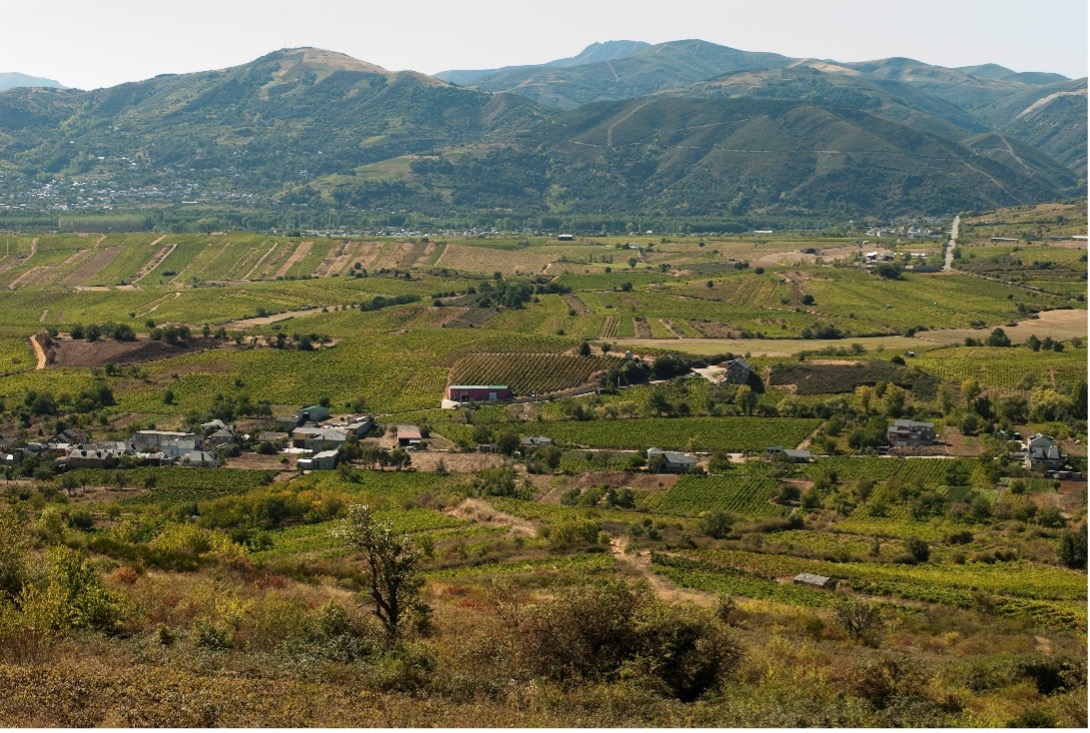
If there’s one thing that Spanish winemakers are brilliant at, it’s identifying a region that has been ignored, forgotten or underestimated–then fulfilling its potential. Obvious examples would be Ribera del Duero, Priorat or more recently the Sierra de Gredos.
In fact, Ribera del Duero is just one such example in Castilla y Léon, a large region in northwest Spain that covers almost a fifth of Spain’s landmass. Ribera’s fortunes have been well documented, and its fame tends to eclipse the other local DOs that share a similar story of rehabilitation. Of the 13 DOs in Castilla y Léon, there are three others that are particularly deserving of your attention: Toro, Bierzo and Rueda.
DO Toro: bullish reds
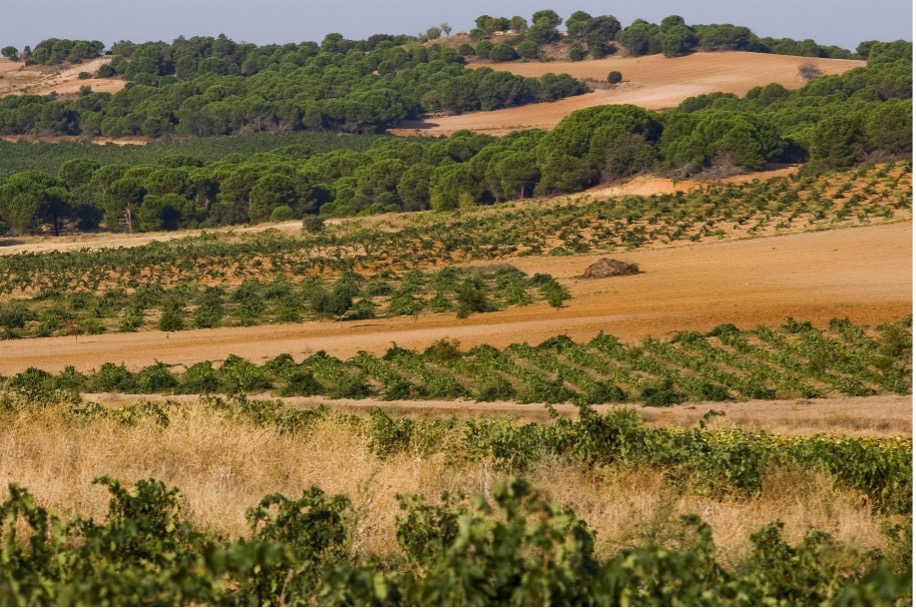
Landscape of DO Toro © ICEX/Juan Manuel Sanz
Follow the Duero River as it flows from Ribera del Duero towards Portugal, and you pass the town of Toro, sitting high on a plateau above the water. It’s an ancient settlement that was famous for its wines as early as the 12th century.
Vineyards are situated between 600 m/1,970 ft and 825 m/2,700 ft elevation, which, an addition to its severe continental climate, makes for extreme growing conditions: scorching summers and freezing winters. What’s more, it sees just 350 mm/14 in to 400 mm/16 in rain each year.
Toro makes mainly reds, and these harsh conditions can make for highly concentrated wines. Traditionally it had a reputation for heaviness and high alcohol, but since 2000, an influx of new producers have sought to tame the bull. When it was awarded DO status in 1987, there were only five wineries. By 2024, there were 63.
The main grape variety here, like so much of Spain, is Tempranillo. Over centuries it has evolved to suit the local conditions, and this adapted phenotype is known as Tinto de Toro. Winemakers can also use Garnacha Tinta, and since 2021 wines can be pure Garnacha. Thanks to outcrops of sand that resisted phylloxera, they have over 120 ha/300 ac of vines with an age of over 110 years.
The wines are classically dark in color and spirit, robust and concentrated, with plush black fruits. They have weight and potency, but are rarely austere. Oak ageing is widespread, sometimes with a significant proportion of new oak, and the wines can age very well.
A small amount of white wine is also produced using Malvasía Castellana (a.k.a. Doña Blanca), Verdejo, Albillo Real and Moscatel de Grano Menudo (a.k.a. Muscat Blanc à Petits Grains). Rosé is also permitted under the DO, which can be made using any of the red or white grapes allowed in the appellation.
Top examples include Pintia (owned by Vega Sicilia), Numanthia (established by the proprietors of Sierra Cantabria in Rioja, now owned by Louis Vuitton Moet Hennessy), Pago La Jara (owned by Telmo Rodríguez) and San Román (owned by Bodegas Mauro).
DO Bierzo: the rise of Mencía
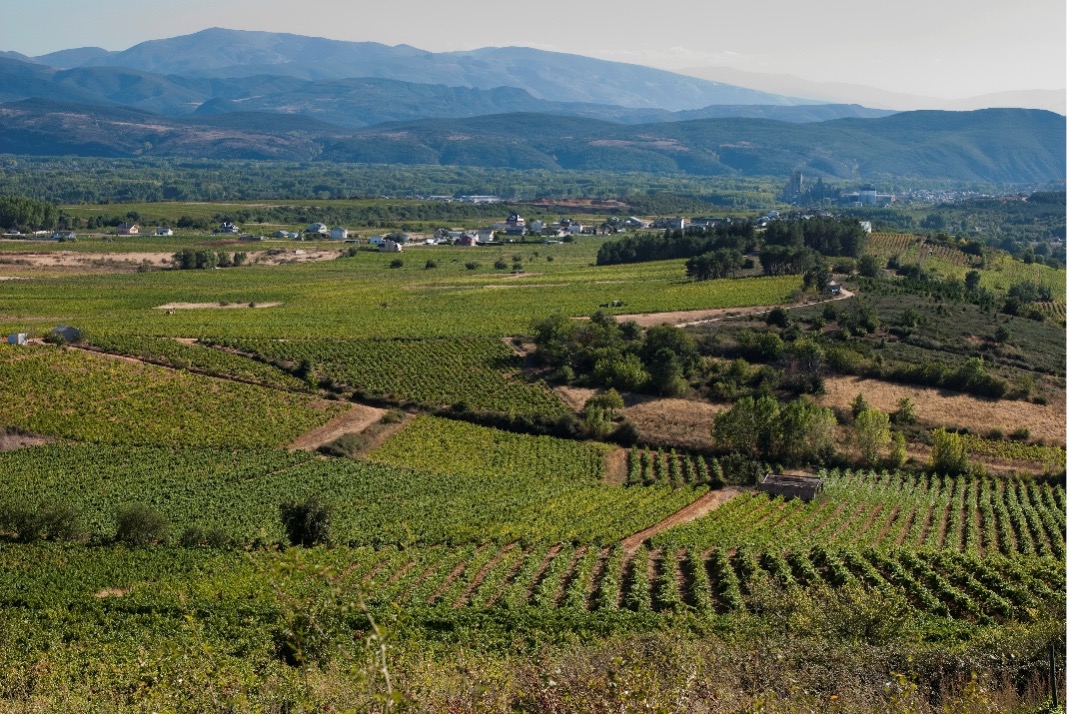
Vineyards of DO Bierzo - © ICEX/Juan Manuel Sanz
While Toro’s wines express polished power, Bierzo’s couldn’t be more different. Located in the far northwest of Castilla y Léon, these have more in common with the lighter-bodied, more delicate reds of Galicia just over the border.
The vineyards of Bierzo are located on the River Sil, with small plots on steep slopes reaching an elevation of 1,000 m/3,280 ft. The soils here are granite and slate, bringing a distinctive mineral dimension to the wines. Sheltered from Atlantic storms and the excesses of the central plateau, it has a milder climate compared to Toro, and is considerably wetter, with 720 mm/28 in of rain on average per year.
The grape used here is Mencía, which is also widely grown in Valdeorras and Ribeira Sacra in Galicia. After phylloxera, it was widely planted on the fertile plains, which resulted in high yields; this gave the variety a reputation for light, dilute wines.
In the late 1990s, the area saw a renewal of interest. One of the main protagonists was Alvaro Palacios, one of the pioneers who earlier brought Priorat to the world’s attention. In 2024, there were 74 wineries operating in Bierzo.
This new cohort of winemakers has proved that, with the appropriate care and attention, Mencía can produce fine wines of real interest and longevity. The best are fresh, upright, tense and savoury, with crunchy red and black berries. Rather than just fruit, they often bring to mind mineral, herbal or floral allusions. They are fine and delicate but structured with fine-boned tannins.
Mencía makes up 71% of plantings in Bierzo; there are also tiny plantings of Garnacha Tintorera, Estaladiña and Merenzao (a.k.a. Trousseau). Additionally they produce a small amount of white wine using Godello, Palomino, Doña Blanca and Malvasía. Rosés are also permitted, using these same red and white varieties.
Good producers include Descendientes de J Palacios, Raúl Pérez and César Márquez.
Rueda: in search of vibrancy
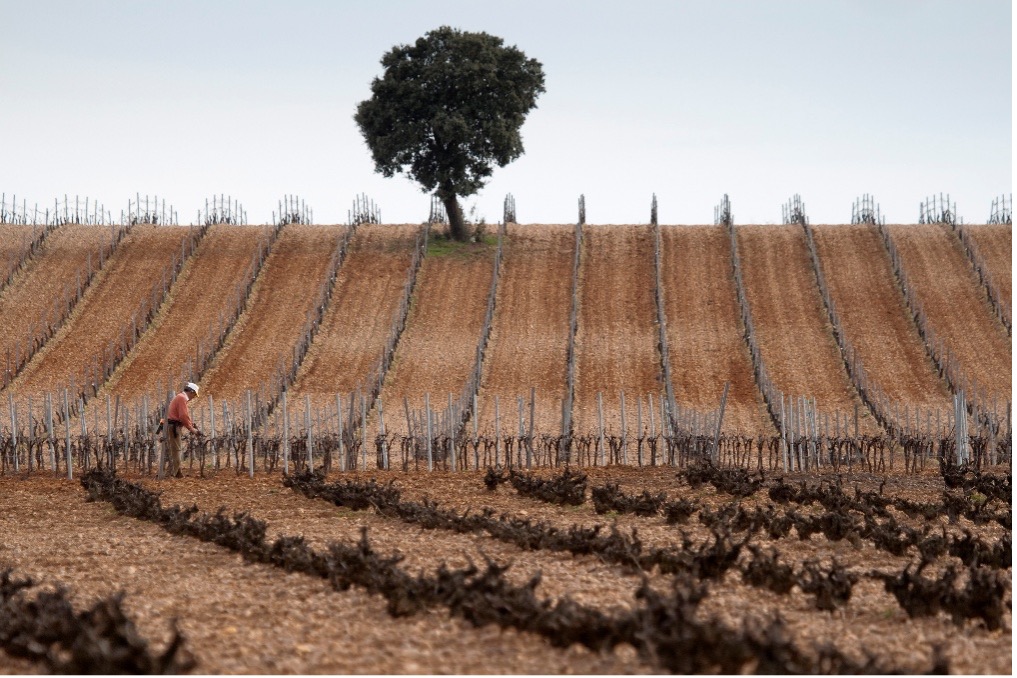
Vineyards of DO Rueda - © ICEX/Juan Manuel Sanz
Just as Castilla y Léon can excel with reds of different styles, so it can with whites–sometimes within the same appellation.
Located just south of the River Duero between Ribera del Duero and Toro, Rueda has had an eventful history. Vines were widely planted here in the Middle Ages, and for centuries the area was known for making fortified wines in a style akin to Sherry. After phylloxera, the vineyards were replanted mainly with Palomino, but it never regained its former glory.
Its fortunes were reversed in the 1970s, when the Rioja producer Marqués de Riscal recognized Rueda’s high elevation (between 700 m/2,300 ft and 870 m/2,850 ft) and limestone soils as having potential for quality dry whites.
Rather than Palomino, it was the local grape Verdejo that gave the best results, and today this is the most widely-planted variety. There are also significant plantings of Sauvignon Blanc, alongside Viura, Viognier, Chardonnay and some remaining Palomino.
There is a host of different styles. Most Ruedas are still, dry and vibrant, with an emphasis on youthful citrussy fruit. Like Sauvignon Blanc, Verdejo is strongly aromatic, with cut grass and green fruits; those made principally from Verdejo often have a positive bitter touch and fennel notes. The high altitude and cool nights help the wines retain their acidity.
Some are made in a richer style, often barrel fermented with lees stirring, resulting in a wine that’s more suited to drinking with food. It’s a variety that works well with oak.
There are two historical styles that are still produced in small quantities: Rueda Dorado, an oxidative fortified wine aged for a minimum of two years in barrel and Rueda Pálido, which is aged under flor. There is even some sparkling Rueda made using the traditional method.
Red and rosé wines are permitted in the DO, but red grapes amount to only 3% of plantings (mostly Tempranillo, alongside smaller plantings of Garnacha Tinta, Merlot, Cabernet Sauvignon and Syrah).
Top producers include José Pariente, Belondrade and Ossian.
Where next?
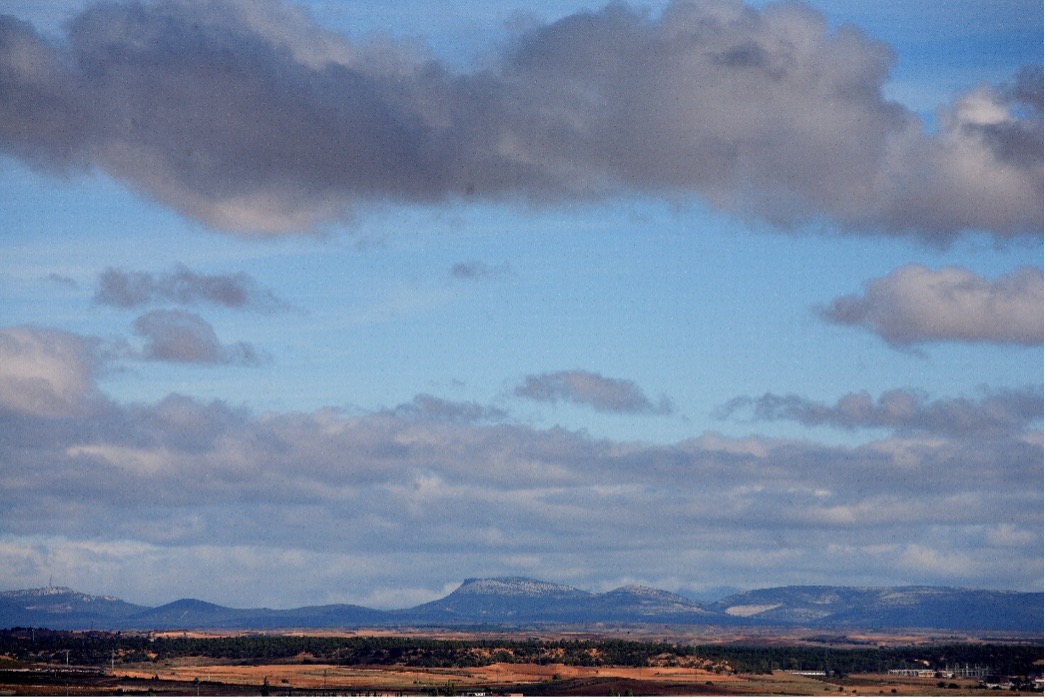
Landscape of Castilla y León 2 © ICEX/Pablo Neustadt
As the largest of the 17 autonomous regions of Spain, it comes as no surprise that Castilla y Léon contains so many contrasting styles: from the muscular reds of Toro, to the fine-boned reds of Bierzo, all the way to the vibrant whites of Rueda.
With ancient winemaking history to plumb, a wealth of indigenous varieties and no lack of innovative winemaking talent, perhaps it’s only a matter of time before we see even more forgotten styles back on the map.




